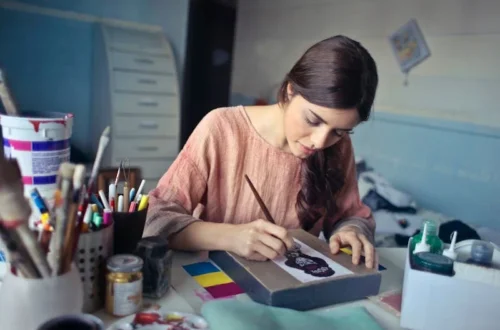
Joshua Reynolds, a luminary of 18th-century British art, left a significant mark on the world of portraiture. Born on July 16, 1723, in Plympton, Devon, Reynolds displayed a prodigious talent for art from a young age. His journey from a small English town to the heights of artistic prominence is a captivating narrative that unfolds against the backdrop of the Georgian era.
Reynolds’ early artistic prowess led him to London, where he apprenticed under Thomas Hudson, a successful portraitist of the time. Eager to refine his skills further, Reynolds embarked on a Grand Tour of Europe, spending several years in Italy studying the works of the Old Masters. This immersion in classical art profoundly influenced his style, setting the stage for his future success.
Returning to London in the mid-1750s, Reynolds quickly gained recognition for his portraits that skillfully combined classical aesthetics with a contemporary flair. His ability to capture the essence of his subjects, conveying both their physical likeness and inner character, earned him favor among the aristocracy.
In 1768, Reynolds achieved a significant milestone in his career by becoming the founding president of the Royal Academy of Arts. This institution, established to promote the arts in Britain, provided a platform for emerging talents while solidifying Reynolds’ position as a leading figure in the art world.

Central to Reynolds’ legacy are his “Discourses,” a series of lectures delivered at the Royal Academy. These discourses offered insights into his artistic philosophy, emphasizing the importance of studying classical art and the human form. His intellectual contributions laid the groundwork for art education and theory in Britain.
Reynolds’ portraits are characterized by a refined use of color, composition, and a keen understanding of the play of light and shadow. His subjects ranged from influential figures of his time, such as Samuel Johnson and David Garrick, to members of the royal family, showcasing his versatility as a portraitist.
As his career flourished, Reynolds faced criticism from contemporaries like Thomas Gainsborough, who favored a more naturalistic approach. However, Reynolds’ impact endured, and his influence extended beyond his lifetime.
Tragically, Reynolds’ later years were marred by declining eyesight, limiting his artistic output. He passed away on February 23, 1792, leaving behind a rich legacy that continues to shape the trajectory of British portraiture.
Joshua Reynolds remains a beacon in the history of art, a pioneer who bridged classical traditions with the evolving tastes of his time. His ability to capture the spirit of the Georgian era in his portraits ensures that his name endures as a cornerstone of British artistic heritage.






One comment on “Joshua Reynolds: Portrait of a Pioneering Artist”